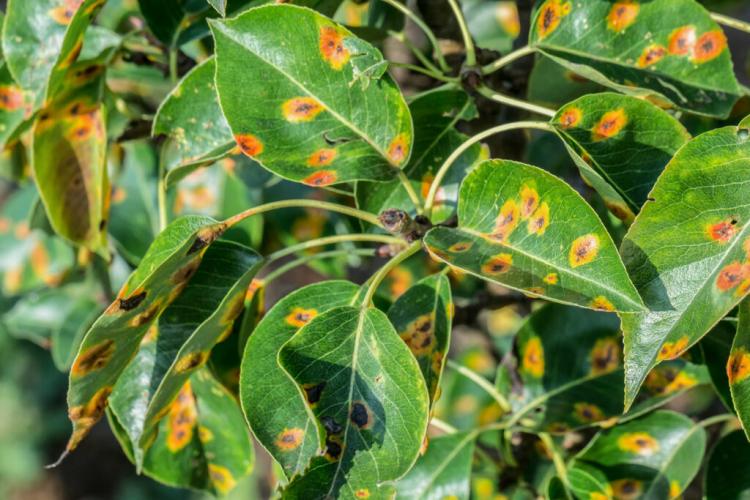Jay: Reputation, Food & Habitat In Our Profile
What do the female jays look like? What does the bird’s call sound like and what does it eat? In our profile on the jay you will find everything you need to know about the breeding season, the food and the special features of the domestic bird.

The jay is easy to recognize by its striking blue wing field
The jay ( Garrulus glandarius ) owes its name to its favorite food, the acorns. In the late year he hides up to 5000 of the small nuts in the forest to stock up for the winter. Despite his astonishingly good memory, however, he cannot find part of it again, which contributes to the spread of the trees. But not only does it serve the oak trees well, but also the animal forest dwellers: in the event of danger, the jay not only warns its fellow species with its piercing call, but also many other animals. Because of this characteristic, he is also known as the guardian of the forest.
Jay: A detailed profile
Table of Contents
| size | About 35 cm |
| Weight | About 170 g |
| Breeding season | April June |
| lifespan | About 15 years |
| habitat | Forests, parks, cemeteries, large gardens |
| Feed preference | Acorns, berries, mice, eggs, insects, seeds |
| Threats | dwindling habitat, birds of prey |
This is how you recognize the jay
Due to its size and striking plumage, the jay cannot be confused with any other native bird – and is also a real beauty. It has a gray-brown, slightly reddish basic color, a black dashed crown and a strong beak, which reveals that it belongs to the crow relatives. On each side of the base of its beak, a broad, black stripe of beard extends to the throat. The dark wing covers each adorn a light and a blue-black banded field – the latter is probably the most striking feature of the bird. In flight you can clearly see the snow-white lower back – also called rump – which contrasts with the deep black tail feathers.

The blue-black banded field on the wing covers can be recognized without a doubt
What does the jay’s call sound like?
Despite its colorful plumage, the jay cannot hide its relationship to other corvids – and its in-depth, cheerful reputation gives it away first. This sounds like a loud rattle and turns into a warning shouting in the event of danger. The other representatives of the genus have a similar reputation, which gave the small group its name. “Garrulus” comes from Latin and means something like “talkative”. The jay does not have real singing in its repertoire.

The jay’s call rang out loud through the forest
You can listen to the jay call below:
How do you recognize the young birds?
Young jays look a lot like their parents. Their plumage has the same reddish-brown color, the dark tail feathers and wing covers can already be seen and even the blue wing field – this is a peculiarity that you can always recognize the jay without a doubt.

The young jays look like their parents’ minor editions [Photo: Anton Kozyrev / Shutterstock.com]
How do you recognize the jays eggs?
As a medium-sized bird, the jay lays larger eggs than the average songbird. These measure around 31 x 23 millimeters and are embedded in a twig nest lined with moss. The clutch consists of four to seven eggs, the basic color of which can vary between greenish, bluish and sand-colored hues. It is not uncommon for the eggs to have fine brown speckles.

The jays eggs are larger than average for a songbird [Photo: Vishnevskiy Vasily / Shutterstock.com]
How do the male and female jays differ?
Unfortunately, it is not possible to differentiate between the sexes of the jay, because the females are colored just like the male specimens.
Which habitat do blue jays prefer?
The jay occurs in all types of forest – be it deciduous, coniferous or mixed forest. He prefers richly structured forests with high layers of shrubbery. On the other hand, he feels less at home in tidy forest forests and open landscapes. From time to time the jay is also found in human habitats, for example in forest-like parks or very large, wild gardens.
Where do they build their nest?
The jay’s nest is usually very well hidden and is preferably built in the tops of trees or high bushes at a height of several meters. Sometimes old nests are also accepted by other corvids or even birds of prey. The jay is very careful when building its nest – as soon as it feels disturbed, it gives up its nesting site and starts again in a different place. This is also one of the reasons why the birds rarely breed in home gardens.

The jay builds a shallow nest out of twigs [Photo: nkula / Shutterstock.com]
When do jays breed?
The jay breeding season extends from April to June. During this time, the parents only raise a single brood, which requires a lot of care. The young birds are specifically nest-seaters, which are born naked and blind after about 16 days of breeding. They are therefore provided with food by both parents in the nest for a full 20 days and remain dependent on them for some time after they have left the nest.
Where do jays spend the winter?
The jay is considered a partial migrant, which means that only some populations leave their breeding area in winter and move south. This mostly depends on the region and the conditions there. Our domestic animals are resident birds and therefore spend the winter in Germany.
Another special feature of the jay is that it builds up a supply of food in the late year and is therefore well supplied even in the barren winter months. To do this, he buries nuts, especially acorns, all over the forest, of which he finds an astonishingly large number.
Support the jay: Here’s how
Even if the jay has developed a good system for getting food in winter, it can still use our help in the cold months. Because the population of deciduous forests with a rich supply of acorns is negligible in many regions. In the following you will find out everything about correct feeding as well as other practical tips.
What do jays eat?
The jay’s diet is extremely diverse. He is a real “omnivore” and uses both animal and vegetable food – from insects, worms and spiders to mice and other small animals to berries, seeds, nuts and of course acorns. Occasionally, jays also predate their nests and eat eggs or smaller nestlings.
For the jay there is a wide range of food that can be offered in winter: apples, raisins, tree seeds and nuts. Sunflower seeds and peanuts are particularly suitable here, as these are also used by other species such as the blue tit. Our Plantura sunflower seeds have the advantage that they come without a shell and can therefore be ingested by the birds without additional effort. It also reduces waste on the bird feeder, in the garden or on the balcony.
Tip: Jay are very cautious birds and therefore rarely come to free-standing bird feeders. It is therefore advisable to place a special feeding place somewhat concealed near the tree.

Jay are colorful but rare guests at the bird feeder [Photo: Giedra Bartas / Shutterstock.com]
Which nest boxes are suitable for jays?
Since jays prefer to nest high up in the treetops and are very sensitive to disturbances in nest building, they rarely colonize nesting boxes. If you still want to try your luck, you should rely on spacious half-cave boxes and mount them in a quiet and protected place, for example in a densely overgrown and little-used garden.
You can find more information on the subject of “building your own nest box” in our special article.
How can you give jays additional support?
Like all birds, the jay enjoys a bird bath in the garden in summer, which it visits regularly. If you also want to promote the natural food supply, you can achieve this with numerous bird-friendly plants. For example, our Plantura beneficial insect magnet gives you the opportunity to create a true paradise for insects and other garden animals, many of which are also on the jays menu.
Another eye-catching garden visitor whose voice can be heard from afar is the green woodpecker. You can find out how to clearly recognize this magnificent bird in our special article.





